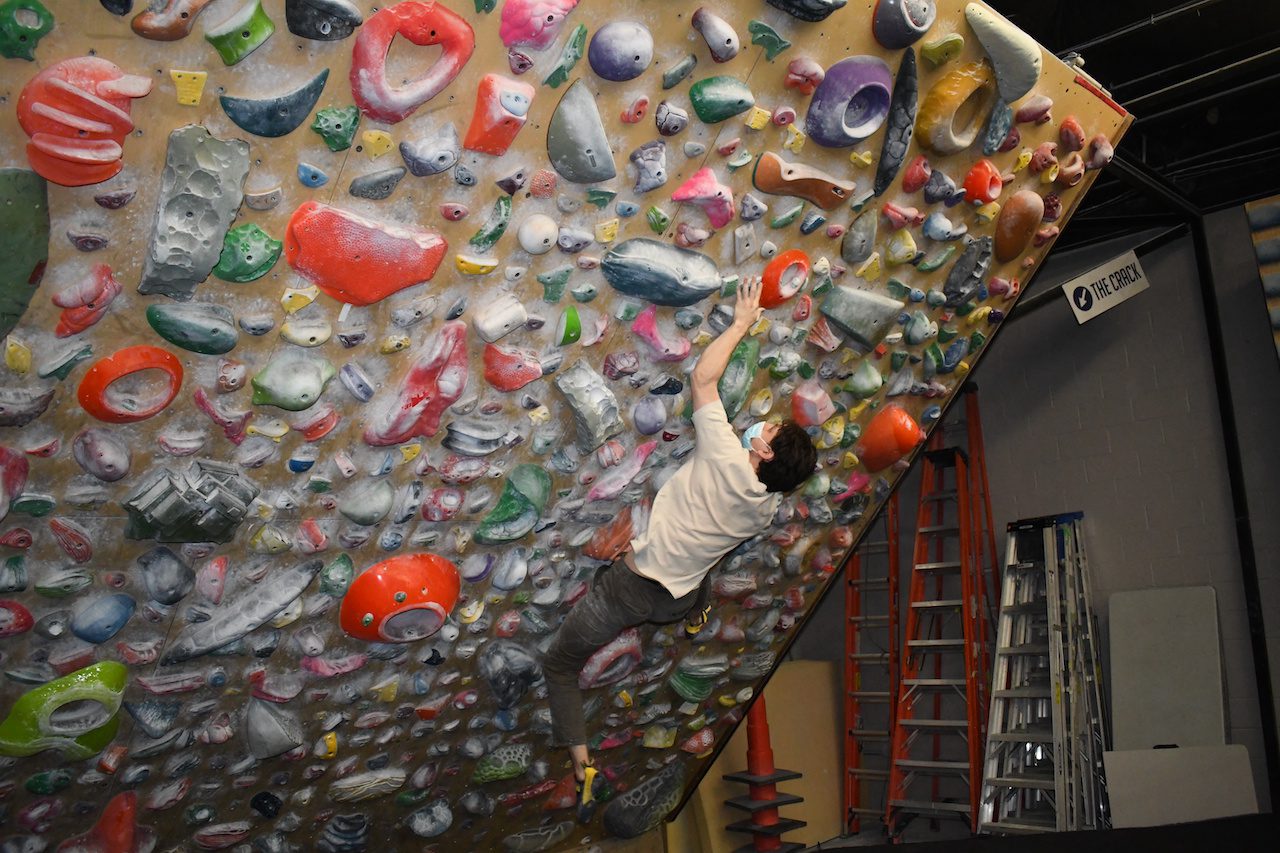Training on a spray wall offers climbers unique advantages that traditional climbing routes simply can’t match. The customizable nature of these walls allows you to create specific problems tailored to your skill level and training goals. Whether you’re focusing on footwork, grip strength, or body positioning, the spray wall adapts to meet your needs.
Another benefit is the ability to train in a controlled environment. Spray walls enable you to practice different techniques without the unpredictability of outdoor climbing conditions. This consistency helps climbers hone their skills more effectively, allowing for better progression over time.
Moreover, using a spray wall cultivates creativity in problem-solving. As you design new challenges for yourself, you’ll learn how to approach climbs from various angles and perspectives—essential skills when faced with real-world bouldering or sport climbing scenarios.
Training on a spray wall can significantly reduce injury risk by promoting proper form and technique. With focused practice sessions targeting weaknesses, you’re less likely to develop bad habits that could lead to strain or injuries down the line. Embracing this innovative tool opens up exciting possibilities for growth as a climber.
Setting up Your Spray Wall for Optimal Training
Creating an effective training environment begins with the setup of your spray wall. First, choose a suitable location that offers sufficient space and lighting. Natural light can be beneficial for visibility, but make sure artificial lighting is adequate to avoid shadows or glare.
Next, ensure the wall is clean and free from debris. Any dirt or grime can affect grip and safety while climbing. Regular maintenance will keep your surface in top condition, enhancing your performance during each session.
Consider incorporating adjustable holds to personalize your workouts. Having various grips allows you to target different muscle groups and skills more effectively. A diverse range of holds also keeps training engaging, reducing monotony over time.
Set up a crash mat beneath the spray wall for safety precautions. This will cushion any falls or slips during intense training sessions. Creating a comfortable environment not only promotes better focus but also boosts confidence as you tackle new challenges on the wall.
Utilizing a Spray Wall to Break Through Plateaus
Reaching a plateau in climbing can be frustrating. You train hard but don’t see the improvements you desire. A spray wall presents an effective solution to this issue, allowing climbers to tackle their weaknesses directly and creatively.
Using a spray wall enables you to customize your training sessions. By adjusting holds and angles, you can create routes that specifically target challenging movements or techniques that need refinement. This level of personalization is key when pushing past plateaus.
Incorporating varied grip types adds another layer of challenge. Mixing crimps, slopers, and pinches keeps your body guessing while developing strength across different muscle groups. The more diverse your training becomes, the less likely you are to stagnate in progress.
Engaging with a spray wall also allows for real-time feedback on technique and form as you try new problems repeatedly without committing significant time outdoors. Each session builds confidence and skill specificity, making it easier to break through those stubborn barriers holding back your performance on natural rock climbs.
Mastering Climbing Endurance with a Spray Wall
Training on a spray wall is an excellent way to enhance your climbing endurance. This unique setup allows you to practice specific techniques while increasing stamina in a controlled environment. You can easily adjust the angles and holds, creating diverse challenges that mimic outdoor conditions.
To build endurance effectively, incorporate longer sessions with varied routes. As you climb continuously over time, your body adapts to the demands placed upon it. You’ll notice improvements in muscle fatigue resistance and overall performance as you eliminate rest periods between climbs.
Integrating interval training into your spray wall workouts can also be beneficial. Alternate between high-intensity climbs and short recovery periods to simulate real-life climbing scenarios. This method not only boosts cardiovascular fitness but also trains your muscles for sustained effort.
Focus on breathing techniques during these sessions. Maintaining proper breath control helps manage energy levels throughout challenging climbs. With consistent practice, you’ll develop greater confidence in tackling more extended routes outdoors or at the gym while enjoying every moment spent on the wall.
Climbing Endurance Techniques
Climbing endurance techniques are essential for anyone looking to improve their performance on a spray wall. One effective method is the interval training approach, where you alternate between hard climbs and rest periods. This not only builds stamina but also helps your body recover more efficiently during intense sessions.
Another useful technique involves adopting a steady-paced climb that focuses on maintaining your rhythm over extended periods. This trains your muscles and cardiovascular system to endure longer routes without succumbing to fatigue. It’s critical to find a pace that feels sustainable yet challenging.
Incorporating dynamic movements into your workouts can enhance muscle coordination while building endurance simultaneously. For instance, practice traversing or using large reaches while minimizing rests in between moves—this will push your limits and simulate real climbing conditions.
Consider integrating bouldering as part of your routine. While it may seem counterproductive at first glance, short bursts of high-intensity climbing can actually boost overall endurance when paired with spray wall training sessions. Balancing these elements will lead you toward significant gains in both strength and stamina.
Tailoring Workouts for Maximum Efficiency
Tailoring your workouts to maximize efficiency on a spray wall can elevate your training experience. Start by identifying your personal goals—whether it’s improving strength, technique, or endurance. Each session should reflect these objectives.
Consider varying the intensity of your climbs. Mix up difficult routes with easier ones to build both confidence and skill simultaneously. Use intervals in which you climb for a set time followed by short breaks; this mimics real climbing conditions while enhancing stamina.
Incorporate specific drills that target different aspects of climbing performance. Focus on foot placement techniques to improve precision or work on dynamic moves to boost power and agility.
Tracking progress is essential too—recording achievements will help you understand what works best and where adjustments may be needed over time. This systematic approach ensures every minute spent training on a spray wall contributes meaningfully towards reaching new heights in your climbing journey.
By customizing routines based around individual strengths and weaknesses, you’ll optimize each workout’s effectiveness while keeping the process engaging and fun!

